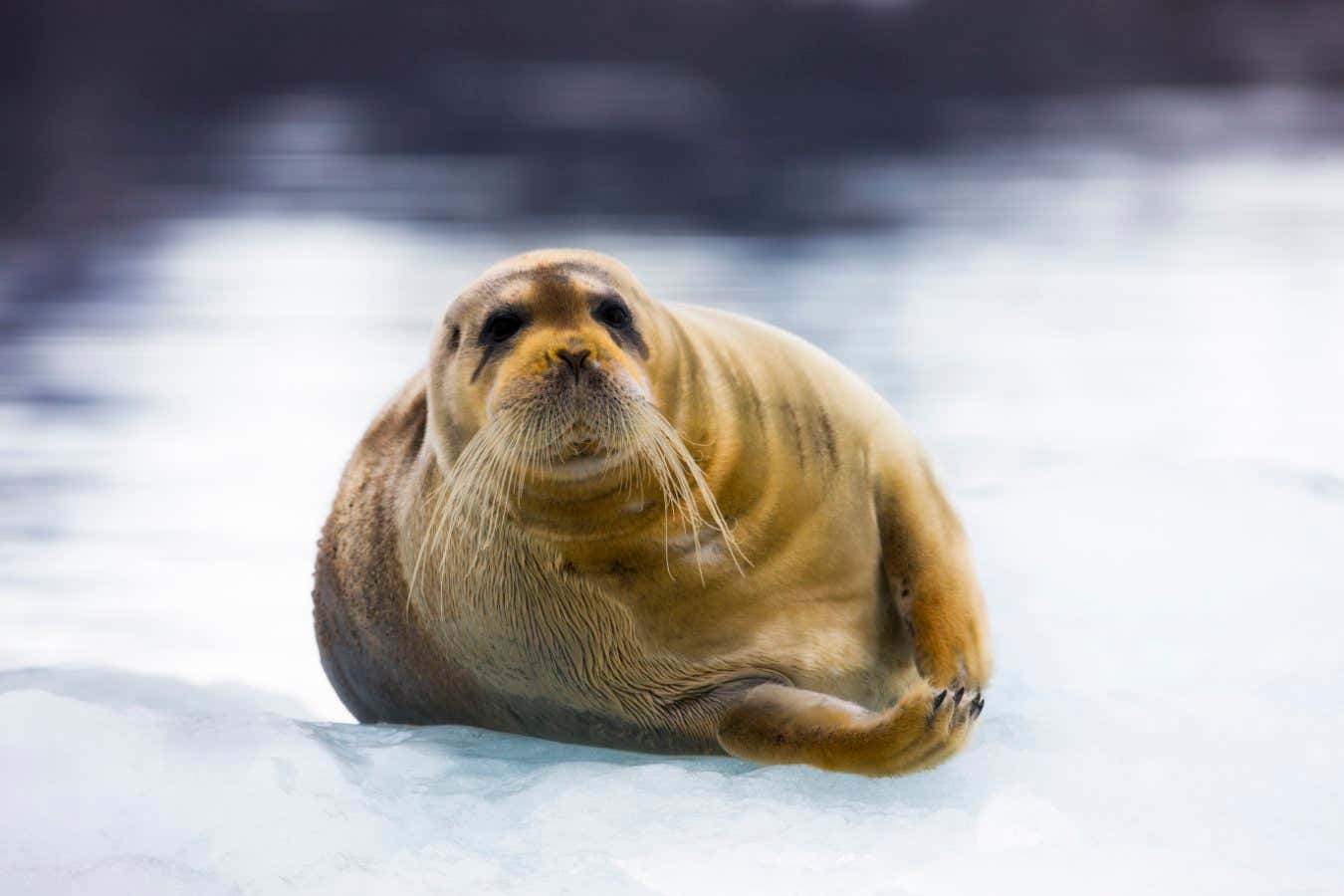

Bearded seals have convoluted nasal bones that help keep heat in their bodies
Ole Jorgen Liodden/naturepl.com
Arctic seals have evolved a nifty adaptation for staying warm in icy climes: intricate, maze-like bones in their noses.
Many birds and mammals, including humans, have a pair of thin, porous nasal bones called maxilloturbinates or nasal concha, which are covered by a layer of tissue.
“They take the form of scrolls, or a branching form a little bit like a tree,” says Matthew Mason at the University of Cambridge.
As we breathe in, air flows through the maxilloturbinates first, which allows the surrounding tissues to warm and humidify the air before it reaches the lungs. When we exhale, the air follows the same route back out, trapping heat and moisture so it isn’t lost.
The more complex the shape, the greater the surface area and the more efficient it is at its job.
Animals that live in cold and dry environments, such as Arctic reindeer, have been found to have more complex maxilloturbinates than animals that live in warmer climates.
Now, Mason and his colleagues have found that Arctic seals have the most complex maxilloturbinates ever described.
The researchers took CT scans of the bearded seal (Erignathus barbatus), generally found in the Arctic, and the Mediterranean monk seal (Monachus monachus). Although both species had intricate maxilloturbinates, the team found that the bearded seal’s nasal bones were much denser and more complicated than any seen before.
Using a computer model that measured how much energy is lost as heat in physical processes, Mason and his colleagues compared how well the seals would keep in heat and moisture at -30°C and 10°C (-22°F and 50°F).
Per breath at -30°C, the Mediterranean monk seal lost 1.45 times as much heat and 3.5 times as much water as the bearded seal. Similarly, at 10°C, the monk seal lost about 1.5 times as much water and heat as the Arctic seal.
“The more complicated structure has evolved to make life in Arctic possible,” says Signe Kjelstrup at the Norwegian University of Science and Technology.
Topics: